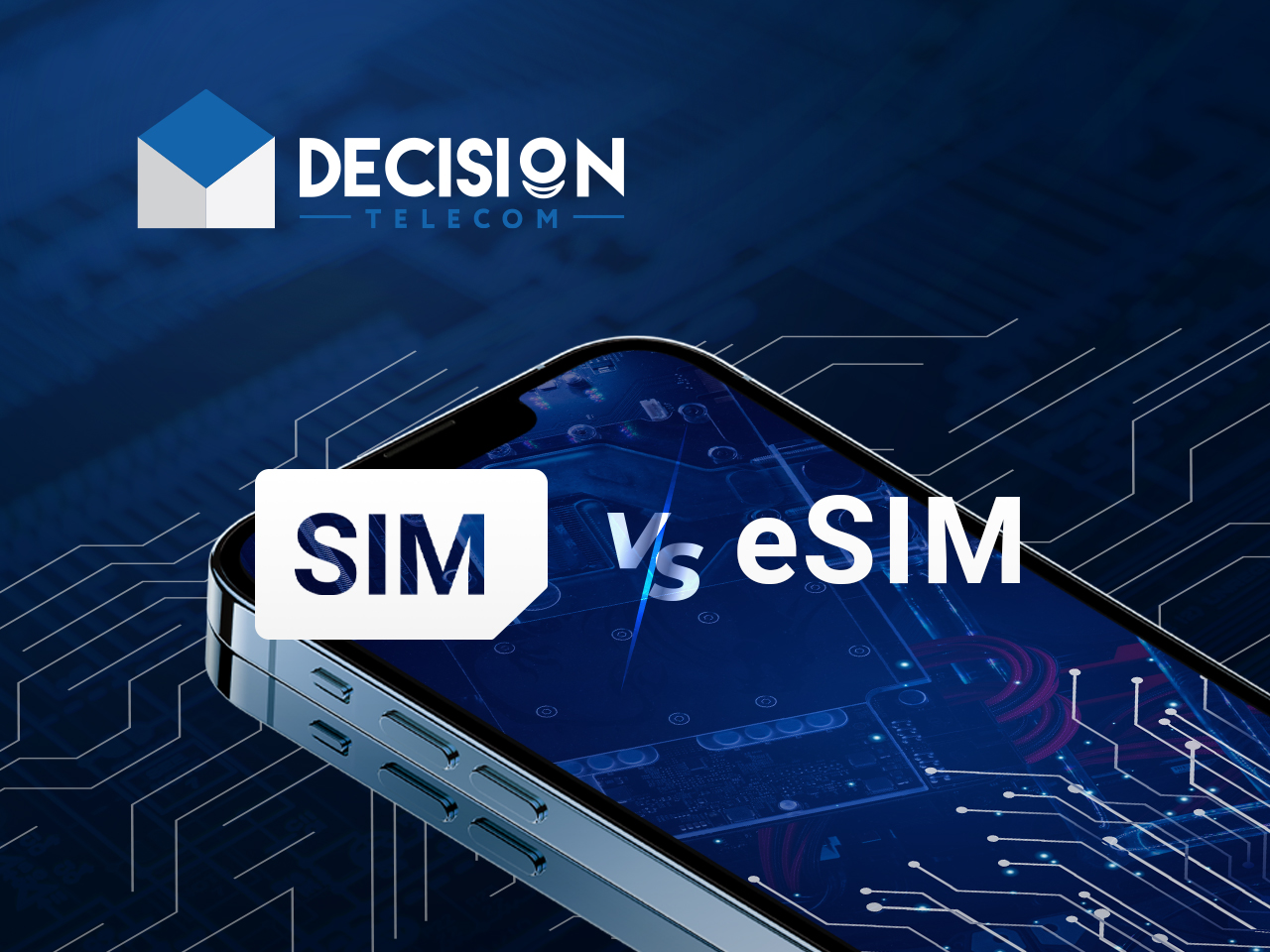
eSIM vs SIM: Which Type of Card Is Better to Choose in 2024?
Traditionally, the main way to connect a smartphone to cellular networks is to install a physical SIM card in your mobile device. To do this, a small chip is inserted into a special slot on the device, called the physical SIM slot, and the subscriber, having registered in the operator's network, can enjoy all the advantages of mobile communications.
However, certain events and advancements, such as Apple's recent decision to get rid of physical SIMs and completely transfer their devices to eSIM, have raised the question of which is better, eSIM or SIM? Let's figure it out.
What is a physical SIM card?
A physical SIM (Subscriber Identity Module) is a detachable card inserted into a mobile device such as a cell phone or SIM-enabled tablet that allows the user to connect to a mobile network to make phone calls, send SMS messages, or connect to the internet via mobile data. It is a plastic card containing a chip that stores mobile network information as well as subscriber information. Each SIM card is uniquely programmed with an IMSI (International Mobile Subscriber Identity) and other security details to authenticate the user's access to the network.
Physical SIM cards are produced and distributed by mobile network carriers. These SIM cards come in three different sizes: standard, micro, and nano. The user can choose one depending on the size of the SIM slot that their mobile device comes with. Physical SIMs make switching phones easy – all you have to do is remove the SIM from one phone and slide it into another, and it pretty much sets itself up in the new device. Subscribers who own dual SIM phones or tabs can even insert and use two SIMs at a time, each of which would be assigned a different number.
What is an eSIM?
An eSIM is an embedded SIM card that is built into a mobile device, such as a cell phone, tablet, or even a wearable device. It cannot be removed from the device and thus cannot be swapped. However, an eSIM is reprogrammable, which means the user can activate any mobile network plan on it without needing to insert a physical card. Activation is typically done via a QR code or the mobile carrier app. Users can download multiple carrier profiles and switch between them without any physical intervention.
This technology enables seamless connectivity and greater flexibility for users than what the traditional SIM card offers.
How physical SIM cards and eSIMs are similar
There is hardly a user now who does not know what a SIM card is and how it works. This small piece of plastic containing a small chip first appeared in 1991.
Recently, conversations about eSIM cards have been getting more common. People are getting curious about what it is and how it works, and it is generally accepted that the physical SIM and eSIM are two completely different technologies. However, they have much more in common than you might think.
-
Both SIM types connect the phone (or mobile device) to the network of the telecom operator.
-
Both are implemented on a variety of mobile devices, not just on phones.
-
Both serve to identify the phone and the type of network connection and tariff plan used.
-
Both can be used alone or with other SIM cards.
-
Both chips are essentially SIM modules, except that one is physical and the other is (almost) virtual.
Which is better, eSIM or SIM?
Despite these similarities, the differences between eSIM and SIM must be considered if you really want to make a decision on which type of SIM card you should use.
Compactness
The most obvious difference between the eSIM and SIM is the size.
eSIM is not exactly the same as a virtual SIM card – it does have a physical existence. It's just that the user does not have access to the chip and cannot see it, which is why most people don't realize that it does occupy some space inside the phone.
However, an eSIM is definitely much smaller than the physical SIM and needs a much smaller amount of space than physical SIM slots take. The eSIM module is directly mounted to the phone, which makes it universal for many devices, not just smartphones.
Physical SIMs take up much more space than eSIMs, in comparison.
Security
The eSIM chip, soldered to the motherboard, is less vulnerable to failures and damage, and the absence of holes and removable parts in the phone ensures greater safety of the device. In case of device theft, the criminal will not be able to just throw away your card or steal data from it, which means that the degree of protection increases further.
In comparison, physical SIMs are much more vulnerable to physical wear and tear, especially if they are used in phones with dual SIM capabilities or are swapped around frequently. There is also a greater risk of different types of SIM card fraud, such as SIM swapping, in the case of a physical SIM.
Capacity
Another difference between eSIM and SIM is also that the former has a large storage capacity for user data.
Setting up and activation
Unlike physical SIM installation, where you need to manually insert the card into the device and activate it, eSIM is activated remotely through a special program. This might be more difficult for some users to do due to the above-average tech skills needed.
Price
Due to the complexity of development and implementation, eSIMs are known to cost more than traditional SIMs.
Network carrier support
Most of the bigger, well-established telecom networks support eSIM technology today. Smaller networks might take some time to catch up due to higher costs, technological challenges, regulatory issues, and other barriers.
Support for physical SIMs, on the other hand, is still easily available from practically all mobile networks.
Device manufacturer support
Embedded SIM technology is evolving, and an increasing number of manufacturers are starting to offer eSIM support for their newer devices. Many new smartphones, tablets, and smartwatches are eSIM-compatible, including models from Apple, Samsung, and Google. It is obvious that in the near future, it will become the future of mobile communications. Many older devices do not support eSIM, which restricts some users to using physical SIMs only.
Despite the advancements in embedded tech, physical SIMs are still supported by a wide range of device manufacturers. They might be great for most phones. However, these chips are simply not enough for the latest wearables or IoT devices.
Summary: A quick comparison between SIM vs eSIM
|
Feature |
eSIM |
SIM |
|
Size |
Compact as it is mounted on the device’s motherboard |
Takes more space |
|
Security |
Enhanced safety and security |
Higher risk of damage and fraud |
|
Capacity |
Higher data store capacity |
Less space |
|
Setup and activation |
Remote programming knowledge can pose a challenge |
Requires no technical knowledge |
|
Price |
High prices |
More affordable |
|
Network and hardware support |
Embraced by newer devices; supported by large networks |
Discontinued by newer devices; supported by all mobile networks |
Conclusion
It is impossible to say for sure which is better between eSIM vs SIM, but the electronic version is more versatile, safer and more environmentally friendly. It has quickly become an excellent choice for those who travel a lot or often change their wireless carrier, subscriber number, or smartphone.
Decision Telecom offers popular telecommunications solutions for businesses that work no matter what type of SIM card your customer has. We work with global wireless carriers directly, which means we provide 100% delivery of messages through popular communication channels. Get in touch!


